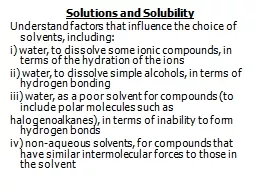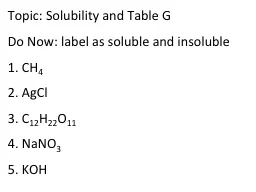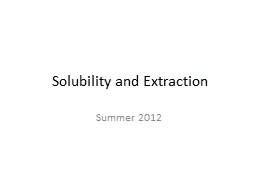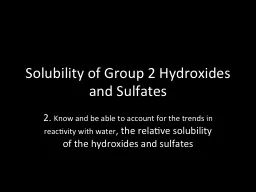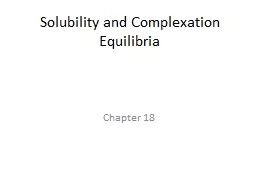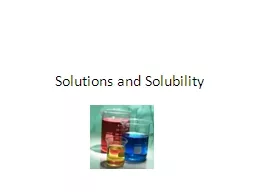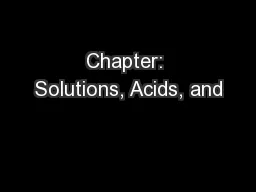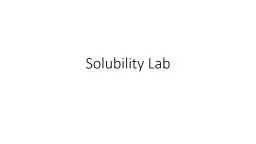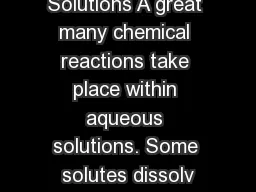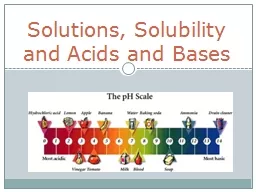PPT-Solutions and Solubility
Author : pamella-moone | Published Date : 2018-03-11
Understand factors that influence the choice of solvents including i water to dissolve some ionic compounds in terms of the hydration of the ions ii water to
Presentation Embed Code
Download Presentation
Download Presentation The PPT/PDF document "Solutions and Solubility" is the property of its rightful owner. Permission is granted to download and print the materials on this website for personal, non-commercial use only, and to display it on your personal computer provided you do not modify the materials and that you retain all copyright notices contained in the materials. By downloading content from our website, you accept the terms of this agreement.
Solutions and Solubility: Transcript
Download Rules Of Document
"Solutions and Solubility"The content belongs to its owner. You may download and print it for personal use, without modification, and keep all copyright notices. By downloading, you agree to these terms.
Related Documents

